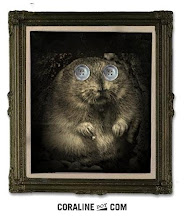In chapter two of Raymond Chandler’s The Big Sleep, we are introduced to General Guy Sternwood. Due to his health, the man often secludes himself in a greenhouse that is “as warm as a slow oven” (7). The interior of this greenhouse serves as a subtle introduction for the rest of the novel. Much like the rest of this sordid, corrupt city, the greenhouse is overbearing. It is full of deceptive beauty that falls apart upon closer inspection and is actually sickening. In a single scene, Chandler has given the reader an analogy to use for the entire world outside the greenhouse.
As Marlowe enters the greenhouse, he notes that it is extremely hot, but also that “the air was thick, wet, steamy and larded with the cloying smell of tropical orchids in bloom” (7). Orchids are the primary visual element in this description, and they tell the attentive reader much. Orchids are often symbolic of beauty and perfection. To a lesser extent, these flowers are also symbols of strength and wealth. In this case though, the flowers are not being described as beautiful or perfect; they are cloying. Merriam-Webster Online Dictionary defines cloying as “disgusting or distasteful by reason of excess”. A few lines later, we are told “the plants… [have] nasty meaty leaves and stalks like the newly washed fingers of dead men” (7).
Though we don’t know it yet, this is the scene we will be faced with throughout the rest of the novel. The women Chandler writes into his novel are all much like the orchids – they are beautiful on the outside, perhaps even a touch exotic, and certainly luxurious in their own way. Under the surface however, they are sickly, disgusting creatures. Geiger’s book store looks normal and pristine at face value – like a place where one can find rare, valuable treasures – but this too is a façade. Eddie Mars’ Cypress Club is meant to look like a grand, old-fashioned ballroom, but it is a masquerade for the death and chaos that seems to follow him. The entire city with its corrupt law enforcement, evil beauties, and misleading external cues is one giant cloying orchid.
When Marlowe and General Sternwood talk directly about the orchids, Marlowe admits to not liking them. Sternwood’s description of the orchids follows along with the idea of them as this corrupt, dying thing. The image we are left with is disturbing rather than beautiful and coveted. Sternwood says of the orchids: “They are nasty things. Their flesh is too much like the flesh of men. And their perfume has the rotten sweetness of a prostitute” (9).
The heat is oppressive and as Marlowe drinks the brandy that was offered to him, it only gets worse. This too serves as symbolism for the book as a whole. Throughout the novel, the heat gets turned up on Marlowe more and more. He is always getting in deeper, finding more and more trouble and danger. The deeper in he gets, the more he drinks, and the more he drinks, well… “the heat didn’t get any less hot with the brandy in [him]” (15).
As if there were any chance of the reader forgetting this unsettling image of exotic beauty turned into a rotting, disgusting thing, Chandler throws in one more visual for us before Sternwood dismisses Marlowe. As the General rings his bell for the butler, we see “the side of the deep dark green boxes in which the orchids grew and festered” (15). This again attaches the idea of beauty and desire to death and decay. It is even stronger this time as the orchids are attached to something green which serves as another symbol of this Eros/Thanatos relationship between sensuality/life and rotting/death.
Chandler is a master at providing clear description to set the stage of his novels. The foreshadowing tells an analytic reader everything they could want to know about what will follow at the end of the novel. If one is surprised by the beautiful, exotic Carmen turning out to be a killer or the corrupt law enforcement in this oppressive city, they need only have remembered the painfully hot greenhouse and the cloying orchids in the green boxes.
Wednesday, October 28, 2009
Subscribe to:
Posts (Atom)
